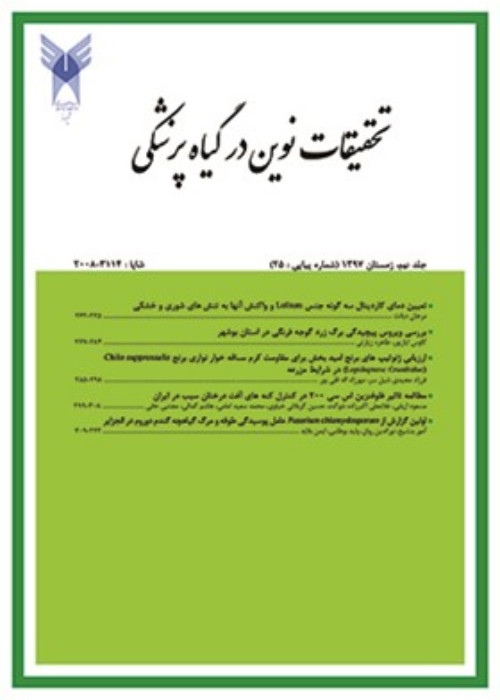Efficacy of some post-emergence herbicides in controlling chickpea weeds (Cicer arietinum L) in south of Kerman.
Author(s):
Abstract:
Chickpea (Cicer arietinum L.) is one of the most important legumes. In order to investigate the efficacy of some post-emergence herbicides on the control of chickpea weeds in the south of kerman, an experiment was conducted in a randomized complete block design with 8 treatments (6 herbicides and 2 control) and four replications in the farm of Jiroft university research center in 2020. Treatments were using herbicides application post-emergence in 2-4-leafy stage of weeds, including bentazone (Basagran M®, 3 L ha-1), bensulfuron-methyl (Londax® 3 L ha-1), bentazone (3 L ha-1 Basagran M®) + hand weeding, penoxsulam (Rezlan®,1.5 L ha-1), oxadiazon + oxyfluorfen (Ronstar®+ Goal®, 1.5 + 2 L ha-1) and imazethapyr (Pursuit®, 1.5 L ha-1), weed-infested and weed-free controls. Fresh and dry weight of weeds, the density of weeds, the total density of chickpea, as well as the visual damage to weeds and chickpea in each treatment were measured. Results showed that there was a significant difference among the herbicide treatments. The highest yield of chickpeas (2690 kg/ha) was observed in hand weeding control treatment (weed-free), oxadiazon + oxyfluorfen (2660 kg/ha) and bensulfuron-methyl (2216 kg/ha) were in the next orders. The lowest chickpea yield was observed in the weed infested treatment (540 kg/ha). Application of oxadiazon + oxyfluorfen and bensulfuron-methyl as post-emergence were the most appropriate treatments to control weeds in winter pea fields in the south of Kerman.
Keywords:
Language:
Persian
Published:
Journal of Novel Researches on Plant Protection, Volume:12 Issue: 1, 2024
Pages:
69 to 81
https://www.magiran.com/p2793837


